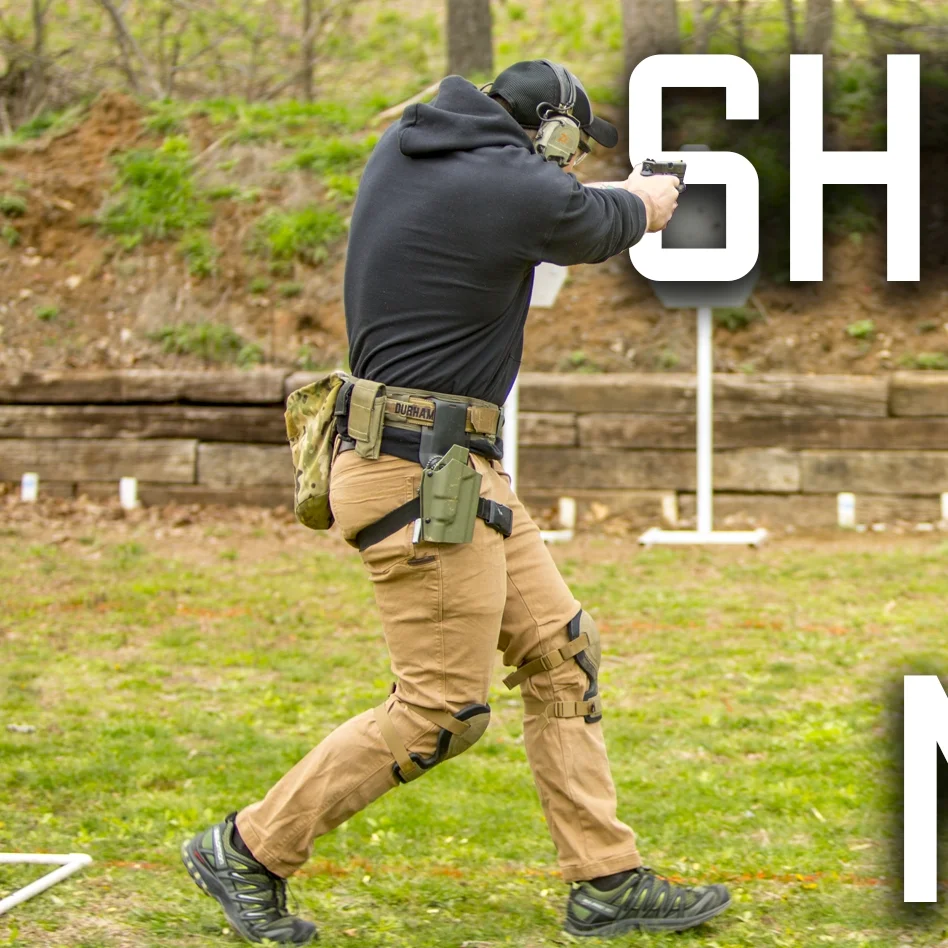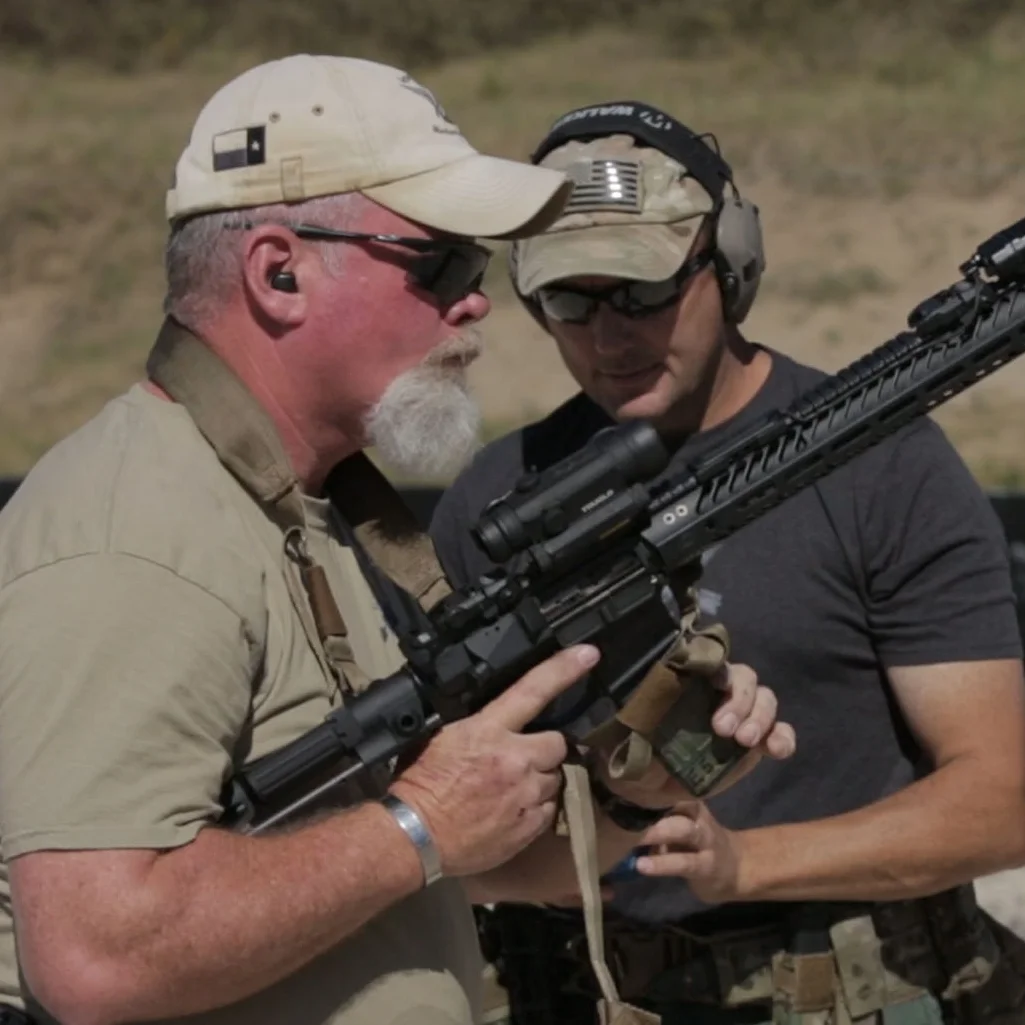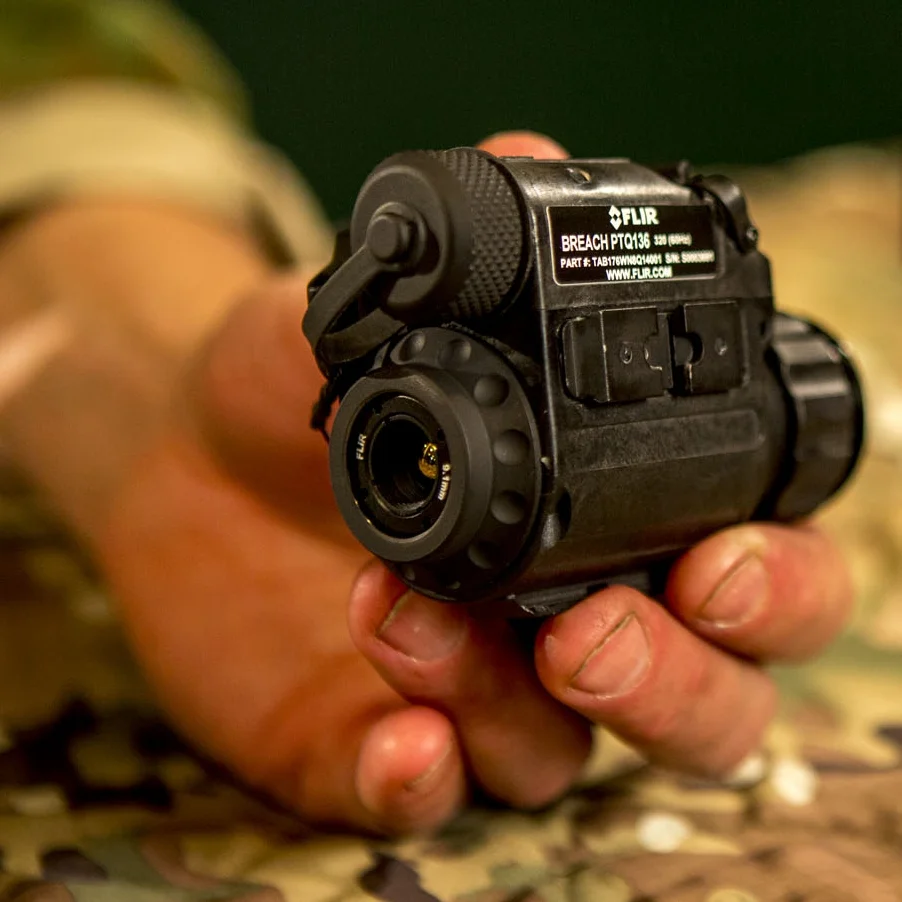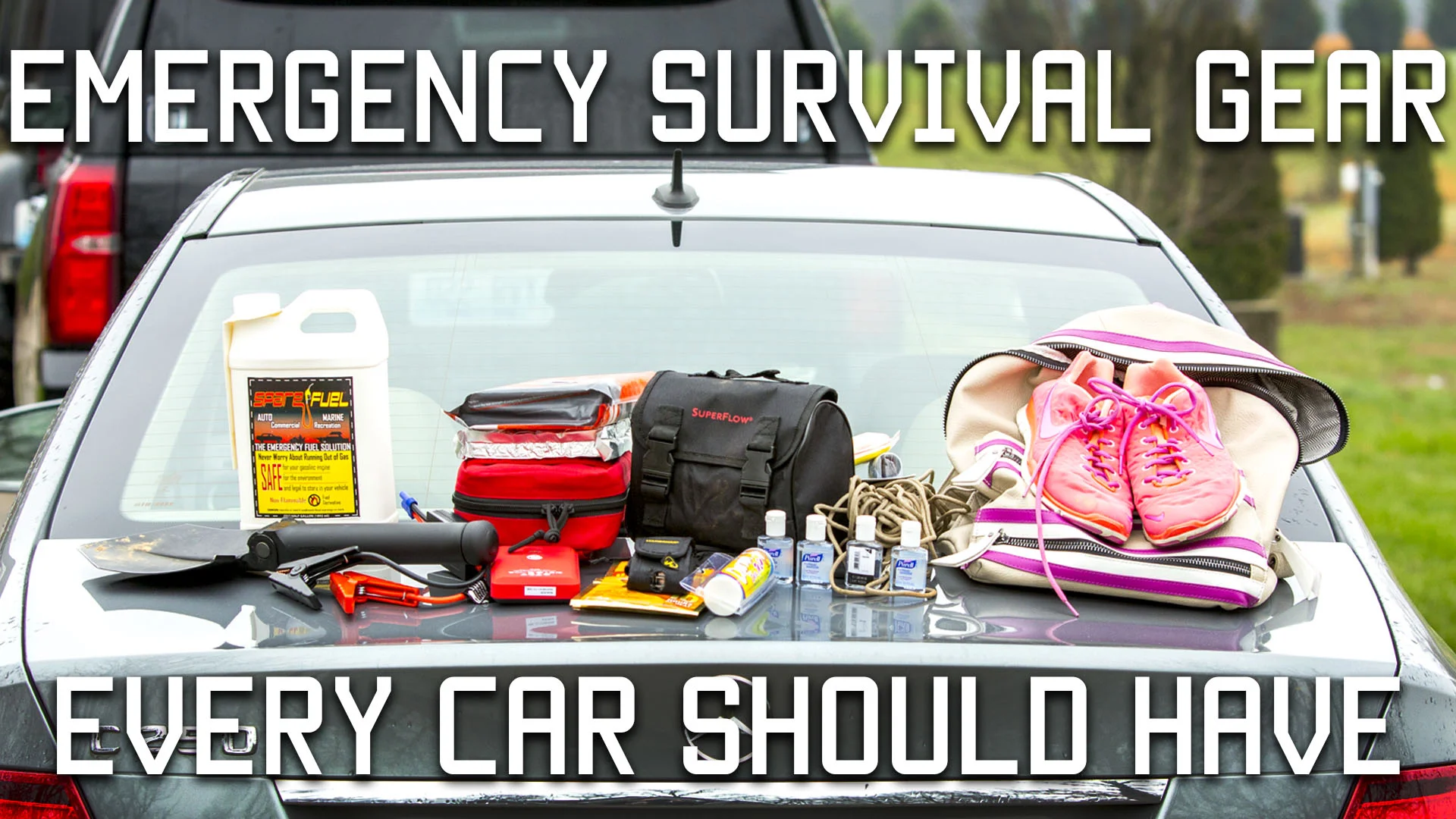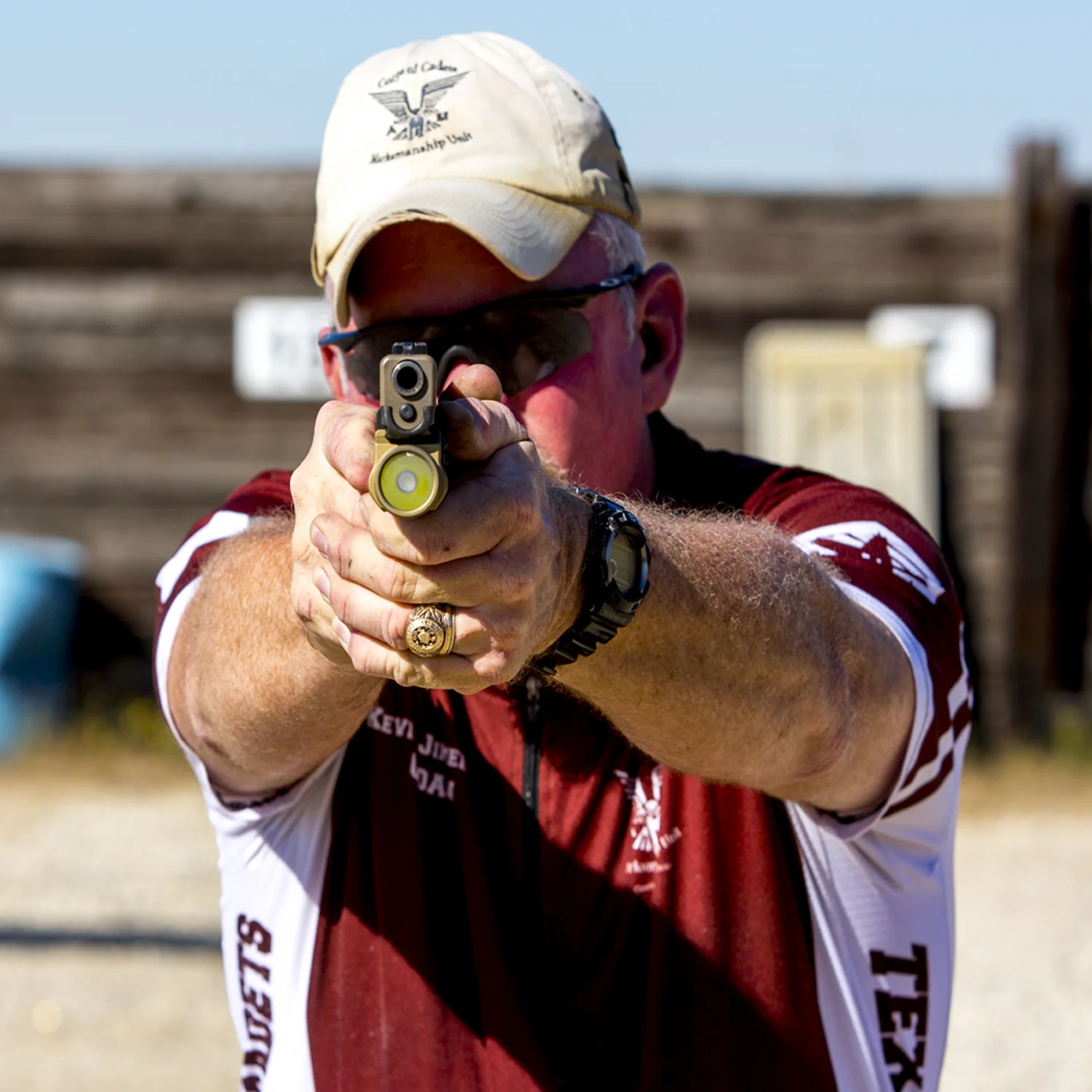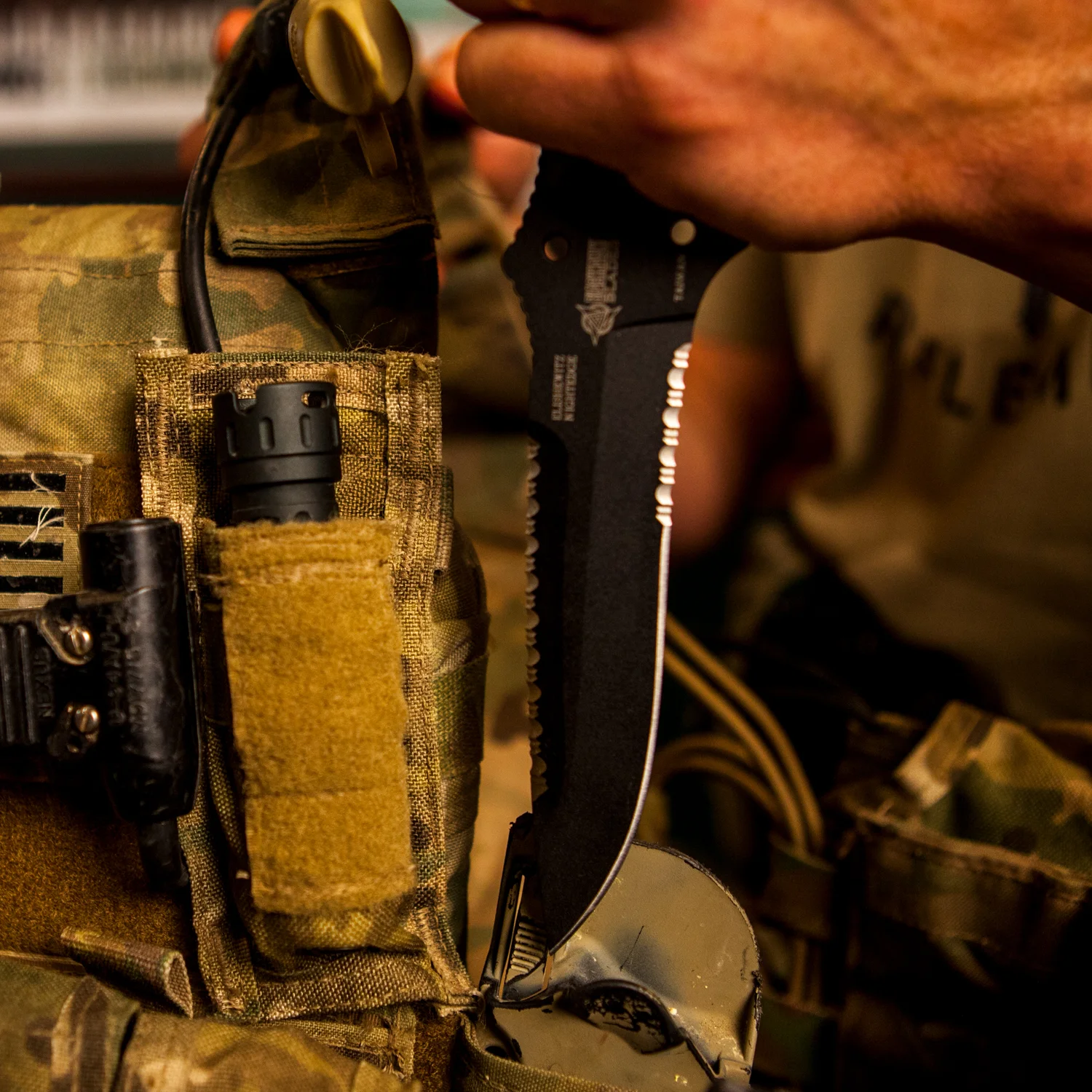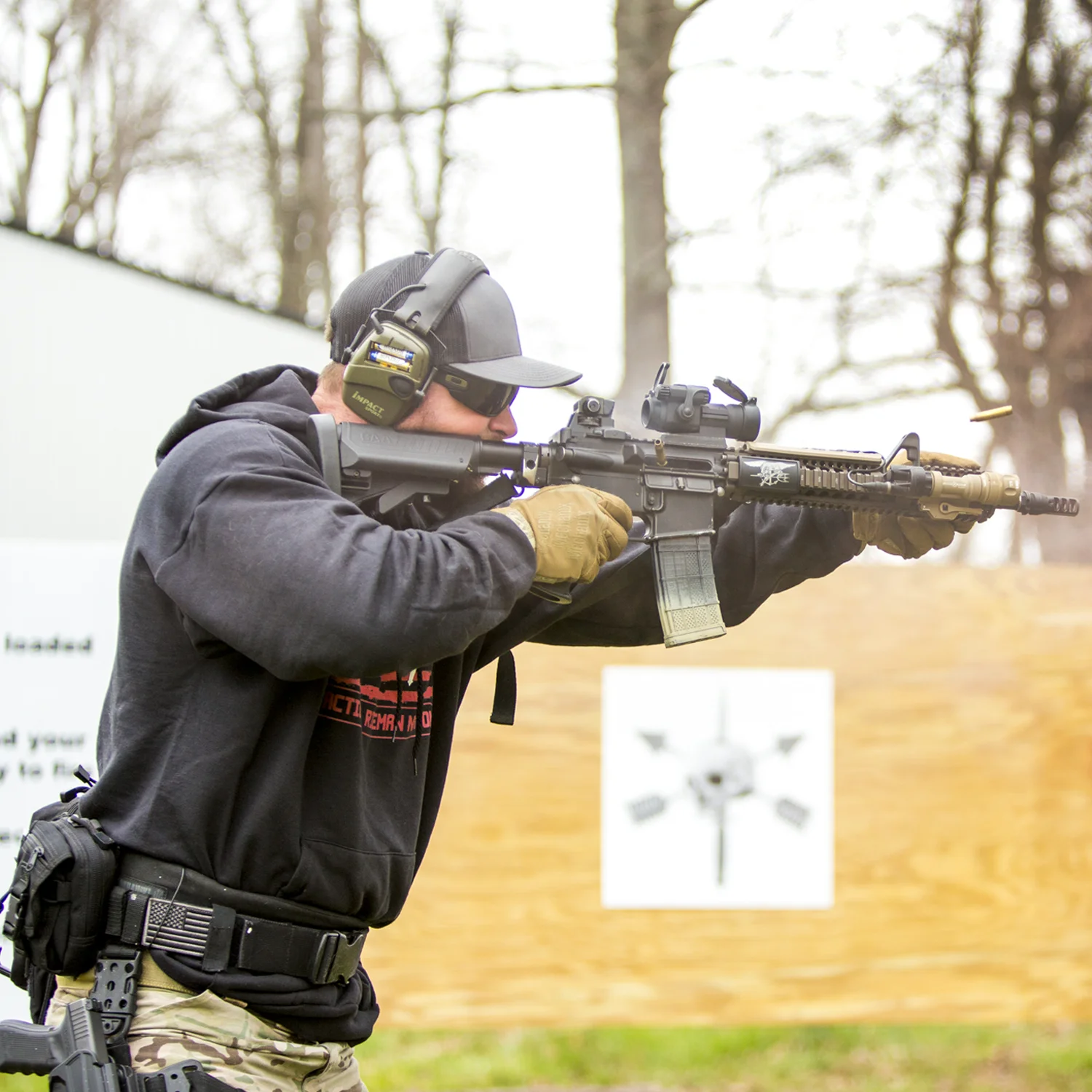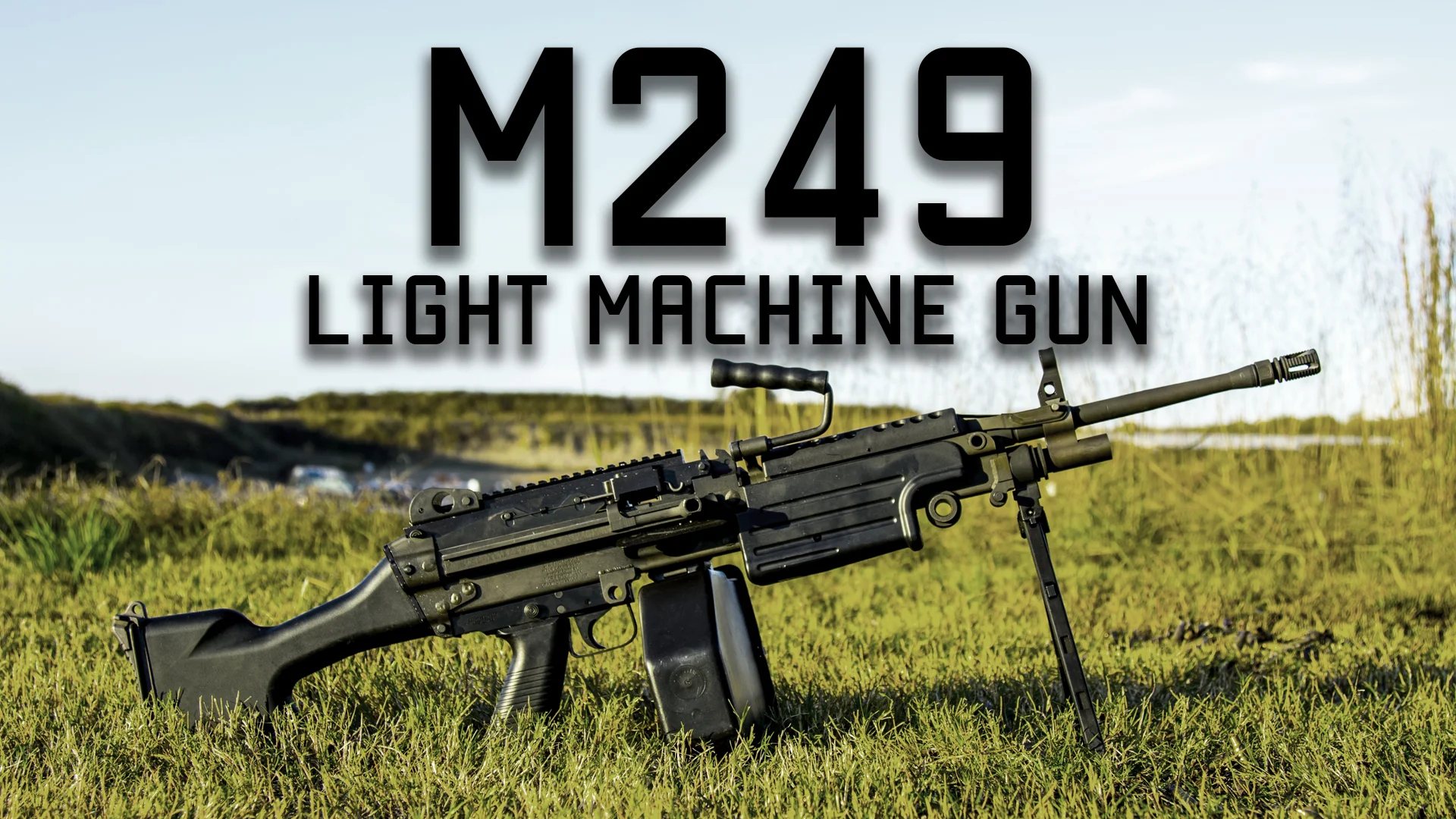This week I give a quick down and dirty on a great option for your rifle: the Ryker grip. We tested this side mounted grip with a series of target acquisition drills on one of my personal rifles and, in my opinion, performed exceedingly well. Over my military career I have always used a bottom mounted, front grip. The Ryker, side-mounted design was pretty easy on shoulder kinetics for acquisition and rifle manipulation, as well as easy to get used to. Out of the box it is an easy mount and allows for different mounting angles based on your personal style. Having a grip like this will help in evolving your shooting skills as well as the confidence to apply a pretty decent muzzle strike if the mission and situation dictate. At a retail of $74.99 on RykerUSA.com (10% off with code TR10), this is a great piece of kit. Please check it out and let us know what you think! Stay violent, my friends!
Karl is an “Ambassador” for FLIR. So, any of you that are interested in getting a good deal on FLIR products; please reach out to us at Tactical Rifleman.com or use the promo code "Erickson18" at Nightvisionguys.com, to save you 10% Here, at Tactical Rifleman, we are all about showing you how the military “Shoots, Moves, and Communicates.” A big part of shooting and moving in the dark is being able to see. As most of our combat ops are done at night, it only makes sense for us to practice at night, using the best NVDs that the taxpayers can buy. That said, whether you are military, law enforcement, or civilian; there are certains guidelines that apply. Match the optic to the mission Thermals are NOT always better than standard IR Always get the BEST tube you or your unit can afford Batteries, batteries, batteries On this flavor, we are going to continue our series of videos about different night vision gear, including GEN-III & Thermal, and both helmet & weapon mounted versions. This fourth video is about a weapon-mounted thermal sight, called the Thermosight Pro. When you are talking about military precision shooting; most snipers lean toward clip-on night sights, as they don’t want to have to carry another complete weapon with a dedicated NVD mounted on it. Makes sense. However, all will admit that a dedicated NVD weapon will always be better; there’s just no way to transport both. How about if you could? How about if you could just walk back into the safehouse or the trunk of the car, and grab a dedicated Night weapon when the sun went down? Actually, many of us have that option. Whether you are a SWAT Sniper or a civilian that likes to hunt; we often have the option of having access to multiple weapons. Now, it may seem “cooler” to just clip a NVD CLip-On Scope to your pretty precision rifle; however, you are greatly increasing the chances of your zero being off. Everytime you add another piece of glass in front of your objective lens, you are taking the chance of throwing off your POA/POI (zero). You don’t have that problem with a dedicated Night Weapon. It stays zeroed. Leave it in the rack or in the trunk, till the sun goes down, and you are all set. I like this Thermosight Pro. The more I use it, the more it becomes my “Go To” Night Shooting gun. I have it mounted on a 300BLK AR upper, that is setup with an AAC Suppressor. When I need it, I just swap the upper… no zero lost. The Thermosight zeroes very easy. The digital zoom doesn’t throw off the zero… and the thermal technology is just awesome. I cover most of the details in the video. I know that many of our viewers are going to bitch about the price tag. Fine, but I want you to see what is out there and what our military is using to bring the fight to the enemy. While they are obviously valuable to the LE & Military; you’ll see that hunters are going to love these too. I like having access to thermals. If you are a rancher, this will really be valuable to you. If any of you are interested in taking a training course with any of the Tactical Rifleman team; please reach out to us at tacticalrifleman.com, where you can find course listings and other great content. Till next time; thanks for watching. Strength & Honor, TR.
Many people never learn to shoot from “less then ideal” positions. In real life, I can think several reasons that would put me on my back. Here is one method that I use for getting back up. Post one foot, lay the other flat. Post the opposite side hand and swing your flat leg through to the knee (ensure the knee is placed wide from the other foot so it gives you a wide base). You will end up in a split squat or lunge position and you simply stand from there.
I prefer this method which differs from the rolling up on the hip method that allows you to keep both hands on your weapon. That method is much harder for some body types and requires some strength. Also, that method will not work in a fighting situation with someone trying to get on top of you. The method I show works for gun fighting or hand fighting and is tried and true. If you have a toddler, sit them on their butt and watch how they get up. It will be similar to what I show here. Interesting isn’t it?
This week on Tactical Rifleman I go over the basic IFAK kit carried by a majority of Naval Special Warfare operators. I say majority because the realm of medical treatment in combat is constantly and innovatively evolving. Additionally, I show you guys a piece of kit once issued to us, an IFAK that inserts into the basic field body armor wrap. Although the tactical field casualty care methods are always improving, one issue remains the same - regardless what you are carrying, make sure you train with it!! Train with your issued tourniquet, self-aid kit, and buddy aid kit. For SEALs, most of our equipment is standard around the board, however, we go through great lengths to protect our stuff from the salt water and sand.
In regards to placement on the kit, I will just say that if that said equipment is ever to be used, we go by the mantra – self-aid, buddy-aid, corpsman-aid. Basically, have your stuff arranged and accessible in order to be able to fix yourself if need be, then the ability for a buddy to get to your equipment, and finally in a place where a trained medic or corpsman to access your medical supplies. I say again, TRAIN YOUR MEDICAL SKILLS AND TRAIN WITH THE EQUIPMENT YOU WILL USE DOWNRANGE.
Once we have a good grasp of the shooting fundamentals and safe manipulation of weapons, we need to introduce other complexities into our training. Moving is not only adding complexity, it is adding a necessary ingredient for survival! We cannot sit still and hope for the best when someone is sending bullets our way. Even if you never trained a day in your life, I guarantee that you will move in some manner if you hear the zing of a bullet by your head. Since that is true, we should deliberately train to move in a fashion that sets us up for success don’t you think? We want to move aggressively and also employ our weapon system accurately so we must have a method that allows for a steady sight picture. That is what we show here. Heel to toe, knees bent for shock absorber support, upper body stays as level as possible. Have fun and be safe!
Critical Task Evaluations (Live 17 SEP 2018)
Combat Drills used by most operators as Standard Critical Task Evaluations (CTEs)
Conducted from 5-8 meters (varies by SOF Unit)
Notes from Coach: Weapons Handling is the secret to not being just a good shooter, but a great shooter. Being efficient, proficient and smooth in how you operate and manipulate your weapons is something that a trained instructor can see from a distance. Just like a major league pitcher can watch a ball game and tell the guy on the mound has been in the league for years, or is a guy that just came up from the minors.
Everything is fundamentals. I teach the same things in much the same way whether it’s to a twelve year old kid, a housewife, a young marine or an experienced member of a national asset special operations unit. It’s Fundamentals first. And that’s weapons handling.
These Squadron quals are a mixture of Team Six and Delta quals that served as standards for them at one of the finest instruction facilities in the US that you have never heard of. I use the SEAL time standard which is slightly faster but the longer distances that SFOD-D fires from. (Well that sucks, you are thinking, right? Exactly.)
Most of my cadet team members can pass these by the end of the first semester of their sophomore year. It’s a primary reason we are undefeated by our Service Academy competition for the last four years. At 51, I can still pass. Younger guys with skill can crush these standards. If you warm up for an hour, a lot of folks can pass. But you dont get to warm up in the real world. So these are a baseline for performance that sets a standard and a starting point to improve upon.
Presentation from the holster, reloads, presentation with rifle from various readys, multiple target engagement, footwork...it’s all there. Oh and accuracy, got to do that too. There is a specific target that these quals should be fired on, the one we are using in the video is not it. Use a 6 inch circle and you will be fine.
Last thing. These are skill tests. They are testing and evaluating what you have programmed into muscle memory, and they demonstrate where you need to focus your training. They should fired cold, with no warm up. The day we filmed these was the day after Karl and I had finished teaching a class at T1G. I get to the range drinking coffee on my tailgate watching the film guys set up, not knowing what Sgt Maj Evil Genius has planned for the day. He walks over and says “hey man, you got your rifle today?” Yeah. “Cool! Stuff some mags, you are shooting your Squadron quals on camera in five.” What’s that saying the SEALs have? The easy day was yesterday?
Enjoy the video.
Kevin M. Jimmerson '89
Marksmanship Instructor
If any of you that are interested in getting a good deal on ANY Thermal, NVDs, or Laser products; we got you a Promo Code "Erickson18" from NightVisionGuys.com. If you have any questions, please reach out to us at TacticalRifleman.com
Here, at Tactical Rifleman, we are all about showing you how the military “Shoots, Moves, and Communicates.” A big part of shooting and moving in the dark is being able to see. As most of our combat ops are done at night, it only makes sense for us to practice at night, using the best NVDs that the taxpayers can buy.
That said, whether you are military, law enforcement, or civilian; there are certains guidelines that apply.
Match the optic to the mission
Thermals are NOT always better than standard IR
Always get the BEST tube you or your unit can afford
Batteries, batteries, batteries
On this flavor, we are going to continue our series of videos about different night vision gear, including GEN-III & Thermal, and both helmet & weapon mounted versions.
This third video is about the small Breach Thermal that I keep in a pouch on my War Belt. That’s right, this puppy is small enough that I carry it around on my war belt, out at the range, every day. The pouch sits on my right hip between my Leatherman and my Med Kit. It’s a sweet little thermal monocular, sized smaller than the old PVS-14s, and it’s a thermal!!!.. Yes, Thermals have disadvantages. However, I prefer to keep a little Thermal monocular handy for a number of cool reasons:
It takes up very little space (same size as a flashlight)
I can use it handheld or weapon mounted or even helmet mounted
It can record hours of video internally, and/or take hundreds of still photos.
Unlike GEN-III NVDs, I can film with this during the day
It only covers one eye, allowing the other eye to respond naturally to surrounding light.
It can be used for spotting day or night.
It’s this last note that many people overlook. Situation… Say you are running a huge GEN-III Ghost White Phosphor Clip-On NVD on the Front of your Schmidt & Bender Day Scope, mounted on your monster 338 heavy sniper rifle; in the hide site, overwatching an enemy ISIS training camp. You’ve been living in this bush for 36 hours, and the Assault force isn’t going to hit for another 32 hours. The enemy knows they are being watched because politicians can’t keep their mouths shut; so the enemy has active security out, with roving patrols traveling all over the terrain. At 0200hrs in the morning, it’s your turn to pull security, while the rest of your sniper team does “priorities of work” (Eat/Sleep). With no moonlight, you can’t see your hand in front of your face. To look 360 around your hide site, you don’t want to pick up that big sniper rifle to pan around the flanks and rear of your bush. Instead, you pull out your trusty little Thermal monocular, and look around. Nothing can hide from you and nothing can sneak up on you. Been there done that. I was on a “Training Op” in Africa, in a hide site on security, when I panned around with my little hand held thermal. As I turned to my right, through the scope I spotted a HUGE “Bear” standing up on its hind legs holding something in front of it!!!. Wait a minute; there are no Bear in Africa. Upon closer look, it was a field mouse sitting back, eating a seed from our scrub brush bush, 10 feet away. Now, if a mouse can’t sneak up on me, then there’s no way an enemy patrol would be able to sneak up on our bush.
Today, I’m a FAG (Former Action Guy), and no one is wanting to shoot at me. I still use the thermal for filming cool videos of my students. I use it for scouting for Deer & Elk. I use it for finding downed Hogs or Coyotes. I use it for checking the insulation of my windows and doors. There are lots of uses for this little puppy. Yes, I keep a GEN-III monocular in my Go Bag for driving; but I’ll still carry this little Breach with me. A good thermal brings a lot of capability to the fight, and this Breach is so small there is no reason to leave it behind.
I f any of you are interested in taking a training course with any of the Tactical Rifleman team; please reach out to us at tacticalrifleman.com, where you can find course listings and other great content.
Till next time; thanks for watching. Strength & Honor, TR.
Links for all items are listed in the write-up below:
This week’s video I wanted to touch a bit on Survival systems. I get asked a lot to do more videos on survival subjects. They all want to know what I keep in my EDC, my bags, and in my vehicles. I preach that your best weapon & tool will always be the knowledge that you have up in your “brain housing box.” That said, it does help to have certain items, to make bad situations more bearable.
So, this week’s video will cover what I recommend you keep (at a minimum) in all the vehicles that your family has. To show that I “practice what I preach,” I am showing the bag that is kept in the trunk of my daughter’s car. Below you’ll find Amazon links to most of the items, to save you time hunting.
Old Book Bag (I used last year’s school bag)
Life Hammer- (Window Punch and seatbelt cutter) Buy these direct from Joe "The Knife Guy" 215-947-0200 or email him at jtraurig@verizon.net and don't forget to mention I sent you.
SPARE FUEL (Prototype: Seriously, this stuff was designed in the 1980s, but never took off. They are currently looking for new investors. If you have money and are interested in investing, please reach out to Jim, at Jhoch@koakonsulting.com)
First Aid- (Basic Small Kit, that I then plus up from my own First Aid supplies)
https://amzn.to/2AxiJ1t
I then stuff that plastic box into a good IFAK (I like RED, for ease to finding), along with all the good trauma gear that I covered in our IFAK video (found in video archive)
Red IFAK https://amzn.to/2Kj6iFZ
Battery Jump Starter (Don’t skimp… Get a good set)-https://amzn.to/2n1Fnp9
Tire Inflator-https://amzn.to/2NX9Jo0
Tire plug kit- (I then put this into the tire inflator case)
https://amzn.to/2O4Js7l
Emergency food rations- (Get the Coast Guard approved versions)
https://amzn.to/2McqOtY
Space Blanket (Big Heavy-weight version)
https://amzn.to/2AwVjcn
Glock E-Tool- (I love this thing)
https://amzn.to/2At2Clz
550 Cord (Need I say more?)-
https://amzn.to/2McrlvY
Hand warmers
https://amzn.to/2v6x4No
Leatherman Wave
https://amzn.to/2KiDm0U
Toilet Paper Travel Roll (or 3)
https://amzn.to/2NZAubE
Water Purification
https://amzn.to/2O4mg9q
Ponchos (Trash Bags work better for me, but not the girls)
https://amzn.to/2O3ynn8
Hand Sanitizer
https://amzn.to/2Kf0Unu
Old Sneakers (Buy new Hiking Shoes and put current ones in Bag, while they still fit)
That about covers it. I know there a tons more items to have in case of an emergency. Hell, my Jeep only gets 12.7 miles to the gallon of fuel, because of all the emergency gear I have inside. However, my daughter doesn’t need a high-lift jack or a CB radio. Her number one tool will still always be using her head and the knowledge that we have taught her. That, and having her father on Speed Dial.
Thanks for watching. Strength & Honor, TR.
Don’t forget to use the Promo-Code TacR5, when ordering from ATS, to save 5%.
Shoot / Move / Communicate; that is what Tactical Rifleman was founded for. That includes not only shooting, but also carrying all that ammo, radios, and other gear that operators need to accomplish the mission. That means high quality gear. While there are several great gear companies out there; we found that a local company has a great new line of gear out, that I think you’ll get a kick out of.
So, this week we head down to the ATS Tactical factory, and visit with Mike Lose to discuss his new line of low-visibility Body Armor.
This may not seem like a big deal to all the Gear-Dos out there that just want to be covered with MultiCam from head to to. However, many of our missions overseas, both in training and real-world, required us to be able to move around in an urban environment with minimal signature. Nothing screams “Military” like 4 guys with matching shirts, packs, pants, and shoes. So, we would have to come up with creative ways to try to blend in… some better than others.
Well, Mike had also had similar issues back when he was a active Green Beret overseas. However, he owns a tactical gear company. So, he set to coming up with a method to help operators to blend in with their kit.
It takes 3 shirts to make each set of gear; which includes a outer shirt, a plate carrier, and a chest rig. He can provide the high-quality shirts in a number of different patterns. However, what I like about it, is that operators can take clothing that is indigenous to the areas that they will be working in, and send them to ATS for Mike’s crew to make custom sets of low-vis gear for each operator. That, my friends, is something new.
So, if you are interested in get sets made for your unit or group, you can reach out to Mike directly through the ATS website. If you have questions that I can help you with… you know the deal, I read them all, and I’ll do my best to answer them.
Thanks for watching. Strength & Honor, TR
The Hi-Lift jack is one of the most valuable tools you can purchase to provide options should you ever get stuck or damage your vehicle to the point it's not driveable. It of course can be used to jack a vehicle up for the common purpose of changing a tire, but it has many other uses that can help your vehicle regain mobility in a pinch. It can be used as a hand winch, a clamp or vise for repair work, or a spreader to pull two pieces apart. We'll cover some of these uses more specifically in other videos. In this video, we simply explain the mechanics of it, a few safety points, and give you a visual of the various uses mentioned.
Comment with questions or stories about how you may have used it, or even seen it used improperly. It can be quite dangerous if not respected, and others might learn from mistakes you've witnessed or experienced. Thanks for watching- have fun out in the middle of nowhere but keep it safe!"
If you're going to put any info on me and/or ASSET in the caption, here's some text that might help.
Bill Haines is the Training Director for ASSET, Inc, a tactical training company near Nashville, TN providing custom-tailored high quality mobility training to various special operations teams, law enforcement and civilians. For more on ASSET's mobility training, check them out at:
http://www.assetsecurityservices.com
Facebook: https://www.facebook.com/ASSETNashville/?ref=bookmarks
Instagram: https://www.instagram.com/asset_tactical_trng/
Thanks gents...looking forward to other videos in the future if you're up for it! Holler if you have any questions
Bill
You guys all know that I preach mastering your Iron Sights. You also know that I always prefer to have a weapon mounted light, whether rifle or pistol. So, when Glock asked me to try out their new Glock-43; I knew I needed to find a light for it. Hunting around, I heard that Crimson Trace had a “new” pistol light for the G-42/43. Thanks to “Joe the Knife Guy,” Crimson Trace sent me a Laser Guard Pro, with their green laser. Now, I’m not a laser guy, but I knew it had the option to turn the laser off, while keeping the light functional.
Well, this is a new video for you; but I’ve been rocking this Laser Guard on this G-43 for over a year now. I have beat it down. I’m on my 5th battery (new one yesterday bought local to save time), but Crimson Trace will send you batteries for life.
Here’s the link to what I’m rocking. I got the version that comes with the BladeTech Holster, but I’ve heard that others are offering holsters now.
https://amzn.to/2L8sHut
I’m still NOT a Laser guy, but there are definitely places where lasers come in handy and do bring benefit to the fight. So, why am I not a laser guy, you ask? Well, because too many people start running lasers and then quit using their iron sights… then, their battery dies. I wasn’t exaggerating when I said I’m on my 5th CR2 Lithium battery.
Let’s clear this up… This is NOT a paid advertisement. Crimson Trace doesn’t even know that I did a video on this. Sorry, that also means for discount promo code. Anyways, I’m doing this video, because I REALLY like this setup. The G-43 is small enough to take anywhere. It shoots SOO much better than my old Ruger LCP “Church Pistol”; and this Laser Guard Pro is one really exceptional unit.
So, if you are looking for a bright light for your concealed carry pistol, give the Crimson Trace Laser Guard Pro a look.
Strength & Honor, TR
As we train on the flat range and conduct abstract drills to reinforce our fundamentals, we can’t forget the context of real situations. If we hope to be an asset in a real world situation involving an active killer or somehow find the like, we must understand that we won’t have the luxury of a “down range” area to collect all of our potential misses. We have to position ourselves in a way that affords us the ability to engage a threat but also takes into account that sporadic movement of people trying to survive! Taking shots from distance across a crowd of chaos and terror will no doubt put you at risk of hitting an innocent bystander. You will have to move closer and achieve angles that you know are acceptably safe for engaging. With that in mind, also take into account one of our known safety rules “know what is beyond your target” or threat in this case. Be safe out there and remember why we do this. All bullets go somewhere and for our purposes we will not always have a controlled environment like a flat range.
This weeks video is about how to use the sight picture you HAVE to get the hits you NEED. Shooters waste time searching for the perfect sight picture...you only need an “Acceptable” sight picture to get “Adequate” hits on target. The Two A’s.
We live in an imperfect world...and our handgun sights live in that world too! And, when you need them the most...they might just let you down! In the sort of situations where you need hits sooner rather than later, there are some simple solutions and some simple drills that you can use to put rounds on target with the sight picture you have. While you are doing that, you can work on getting a better picture sight and/or correcting the improper grip that caused it to start with.
We get asked all the time "what is the best night vision device?" Or "what is the best night vision monocular?" Well, Karl is going to break it down for you.
Karl is an “Ambassador” for FLIR. So, any of you that are interested in getting a good deal on FLIR or Armasight by FLIR products; please reach out to us at Tactical Rifleman.com
Here, at Tactical Rifleman, we are all about showing you how the military “Shoots, Moves, and Communicates.” A big part of shooting and moving in the dark is being able to see. As most of our combat ops are done at night, it only makes sense for us to practice at night, using the best NVDs that the taxpayers can buy.
That said, whether you are military, law enforcement, or civilian; there are certains guidelines that apply.
Match the optic to the mission
Thermals are NOT always better than standard IR
Always get the BEST tube you or your unit can afford
Batteries, batteries, batteries
On this flavor, we are going to continue our series of videos about different night vision gear, including GEN-III & Thermal, and both helmet & weapon mounted versions.
This second video is about the single-tube MNVD that I keep in my Go bag. It’s a sweet little monocular, like the old PVS-14s, but much better. Yes, Bino or Quad NVDs do allow wider field of views. However, I prefer to keep a little GEN-III monocular with me at all times.
It takes up very little space (same size as a flashlight)
I can use it handheld
I can mount it on a helmet or head harness
It eats less batteries than multi-tube NVDs
It can see through glass windows and windshields (thermals can’t)
It only covers one eye, allowing the other eye to respond naturally to surrounding light
It’s this last note that many people overlook. Say you are running bino NVDs inside a house, and the bad guy flips on the lights… you now have to quickly flip up your NODs. Say you’re driving blacked out wearing bino NVDs and you turn a corner onto a street with a street light or neon sign. This causes your NVDs to bloom, and you can’t see shit till you get by the light source. Running a single-tube monocular allows you to use your “free” eye to still see during such occasions. Now, I’m not saying this pro outweighs the con of limited field of view, but it should still be considered.
Before you ask… Let’s play “I Spy” and I’ll answer a few questions that I know my TR family is going to ask:
Yes, we filmed the “indoor” portion of this video in my “Man Room.”
Yes, we did go driving wearing these MNVDs. Blacking out a vehicle is easy but takes time.
Headlights: just turn them OFF, so, they are available if needed
The Dimmer switch for dash lights does dim enough
Black out the dash with custom-cut cardboard or tape
Pull fuses/bulbs or tape over tail & brake lights
If you are going to be doing this often; add a kill switch
Don’t forget the license plate light
We wear running around 30 MPH off-road, and got up to around 65 mph on-road. That completely scares the shit out of any passengers not wearing NVDs. Adding IR Spotlights allows you to drive around 10 MPH faster, but enemy with NVDs will pick you up miles out.
Some of you have asked about the military Challenge Coins that are on display on top of the chair rail. They go all the way around the room, and each of them has a story behind it. I’m gonna share a lot of these stories with some of our supporters, on Patreon, but I just don’t have the time here to do it.
The Livefire scenes; I’m shooting with a FLIR TMAIM (IR & Visible Lasers, and IR Floodlight) Sorry, but I believe it is not currently available to the general public. However, there are similar IR products out there on the market. IR Illuminators are a good tool to have in your tactical tool box.
OK, now here’s a question for you… Back in the “Man Room”... What is the top left picture, hanging on the wall? Your left, and framed. If you know what it is, for sure, let our other viewers know in detail, as they are hard to find but a great piece of our military history. Leave your guesses in the comment section below. You know I read all your comments.
If any of you are interested in taking a training course with any of the Tactical Rifleman team; please reach out to us at tacticalrifleman.com, where you can find course listings and other great content.
Till next time; thanks for watching. Strength & Honor, TR.
Many people are super competitive when it comes to duplicating drills etc (me as well). I want to be the best I can be but not at the cost of “stacking the deck” so to speak. By that, I’m talking about the process of getting your race gun, your OWB holster, and warming up a ton prior to testing your abilities on a drill. That’s fine! I do the same thing sometimes. Let us not forget to prepare for the self defense situation though.
Always give yourself a few dry runs with your set up for the day, and always run some plain clothes and concealed carry set up drills on the range when you can.
The cornerstone of being a Green Beret or any other Special Operations Soldier is training and knowing the basics! As you can see, there is not much flare or pizazz to these few drills shown. Don’t be fooled though, there are many important components that are being worked that apply to many more complex drills. I suggest doing these basic drills until you have acceptable accuracy and speed (safety always first). Once you are easily executing these drills, instead of graduating to other drills, add some stressors to the mix. A few things you can add that will give you some stress and better simulate a real life threatening scenario are: time standards (shot timer), physical activity, target variations (smaller, target ID, hostage etc), or even an audience of peers watching you.
After that, get some force on force training with training munitions that really puts your skills to the test in a 2 way gun fight. Remember, the flat range with no bad guys is the easiest place to execute shooting drills, you can only go so far there.
Sergeant First Class (Retired) Donnie Bowen has about 22 years military experience; 13 years of experience within Army Special Forces as a Green Beret, conducting all aspects of Special Operations, to include training, execution, and technical oversight at the detachment and company level, and as well as the training and execution at the combined joint task force level. SFC Bowen has earned numerous awards, to include a Army Commendation Medal for Valor. His military schooling includes the Special Forces Weapon Sergeant Course, Military Free Fall Course, SFARTAETC, Mountain Warfare Course (Summer and Winter), USSOCOM Joint Armorer's Course, S.E.R.E. -C (High Risk), Modern Army Combatives Program (MA.C.P.) Master Trainer Course, Special Operations Combatives Program (S.O.C.P.) Instructor Course, to name but a few. SFC Bowen is a Brazilian Jiu-Jitsu Black Belt, a Judo Black Belt, and a Black Belt in two Karate disciplines, as well as has a couple years of experience in the Filipino and in the Indonesian martial arts training in the art of the blade and the use of blunt objects for offense and defense. SFC Bowen is also a graduate of the Operational Security Strategies "Lone Operator" Unconventional Warfare Strategies Course. After retiring, SFC Bowen is the founder, owner, and head instructor of BOWEN Combative Arts Academy in Clarksville, TN, where he teaches and coaches children to adults in the arts of Brazilian Jiu-Jitsu, Judo, Muay Thai Kickboxing, Wrestling, Self-Defense/Bully Proof Techniques, etc.. He even work with local law enforcement, SWAT, and first responders on basic combatives techniques.
The “check” drill is one of my favorite drills to do on the range but it is only for those that have become safe and proficient in all of the sub-tasks involved with the drill. If you are not to that point yet, I suggest that you break down each task and deliberately train these things until you are comfortable with it (up drills, reloads, draw from holster, transition, re-holster, etc.).
If you try and tackle the more complex task all at once you could develop some bad habits inadvertently. So, go at a speed that allows you to consciously acknowledge the small movements and do them right (eg. trigger finger indexed, safely holster, placement of hand on rifle when going back to rifle, efficient movement based off of your sling/equipment set up etc.). Remember that Green Berets May have advanced training but the basis of everything we do is being solid on the fundamentals! That’s it from Instructor Zee and Tactical Rifleman. Thanks for tuning in!
Hey Tactical Rifleman nation! This week on TR, I give you guys a quick tour around one of my AR setups. Now, spoiler alert... nothing on my setup is going to really blow any skirts up. I have the usual SOP setup (optic, back-up irons, flashlight, etc.) But what I have found is some great products on the market these days that can really boost your AR performance. Things such as trigger upgrades, grips, flashlights, etc. can really step up your rifle game. For my active duty heroes, I know there is only so much you can do with your service rifle but maybe this video will help you pick out a sport rifle to train with and evolve your skills to the next level.
One thing I would like to point out on my setup is my new Ryker Grip. I was a little skeptical about this piece of kit but once I put some rounds downrange using this new grip, my mind was changed. The Ryker grip is one of the easiest and best upgrades I have made. I suggest you check out their product line and see for yourself. I found the target acquisition to be just a step quicker and easier on the shoulder for long days training on the range. As always, I hope this video helps you out and look forward to the comments and critique. Stay violent, my friends!!
This week, on Tactical Rifleman, we are going to do another Precision Rifle or “Sniper” video. Now, I know that these videos don’t get a lot of views, like our sexy & exciting videos do. I know sniper rifles are boring. Tough Shit, because our goal is to make all of us better shooters; and to do that, we need to know (and master) the basics.
So, this week’s video will be about the difference between having a Precision Weapon and being Accurate. There is a difference.
Are you an Accurate shooter? Just having a Precision Rifle with Precision Ammo does not make you Accurate. It helps, but it does not ensure it.
So, how do we find out? Again, I know everyone wants videos about sexy new shooting drills that will make them Special Ops Ninjas. Well, not this week. This week, we are going to just do a simple test of you and your gear, using Grouping Drills.
Go out to the 100 or 200 meter line, and shoot a five round group. Take a break, then get down and do it again… and again… and again. Then, go down and check your target. The Standard is to shoot 1 Minute of Angle (MOA). So, at 100 yards, your shot group should be no larger than 1 inch. A good gun should be able to shoot .5 MOA and I have seen many rifles capable of tighter groups than that.
Once you are done measuring and analysing your shot groups; take a hard look at yourself in the mirror and spit it out… Are you are a “Sub-MOA” shooter, or are you a “2 MOA” Shooter? It doesn’t matter to me. What matters is that you learn the limits of you and your equipment. Then, you can go out and strive to improve.
I like to do these drills with ALL my rifles; from shorty AR all the way up to my .338 LapMag AXMC. Especially, right before a long 3-Gun match; I like to double check how well a particular rifle and particular ammo are getting along together. Why waste your time shooting at a 6 inch plate at 500 meters, when you know your setup only shoots 2 MOA?
In this video we also talk about how to read your shot groups, to possibly help diagnose issues that you might be having with your gun or ammo. So, I hope you all get a little something out of it.
I want to give a special “Thanks” to all our Patreon supporters. With their help we are going to be able to step up our video content. So, if you want to help out, please check us out on Patreon.
Besides better videos… How about REAL Training? The Tactical Rifleman crew will soon begin offering open enrolment courses, on a variety of subjects. These courses can be held here, OR we can travel to your location, if you have enough clients and a range/classroom to support the training. So, for those of you that have been hinting about attending a class; start finding like-minded friends, and we’ll be putting classes together soon.
Hope you enjoy. Strength & Honor, TR.
This week, on Tactical Rifleman, we are going to do a brief introduction into the M-249 Squad Automatic Weapon (SAW). Pretty well everyone in the modern US military is familiar with this weapon. It’s used in base defense, mounted on light vehicles, and is the “Suppressing Fire” weapon of all our infantry squads. We aren’t going to bore you with all the statistics. If you want to know the text book maximum effective range, then go to an E-5 Promotion Board. Rather, we are just going to cover Load/Unload/Malfunctions, and then wrap it up with dumping 400rds into a couple illegally parked cars.
I want to give a special “Thanks” to all our Patreon supporters. With their help we are going to be able to step up our video content. So, if you want to help out, please check us out on Patreon.
Besides better videos… How about REAL Training? The Tactical Rifleman crew will soon begin offering open enrolment courses, on a variety of subjects. These courses can be held here, OR we can travel to your location, if you have enough clients and a range/classroom to support the training. So, for those of you that have been hinting about attending a class; start finding like-minded friends, and we’ll be putting classes together soon.
Hope you enjoy. Strength & Honor, TR.








